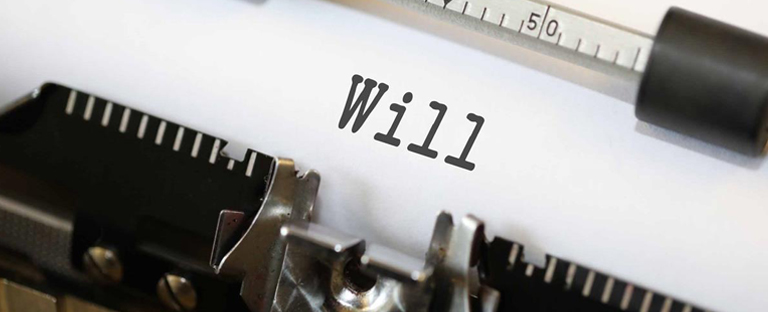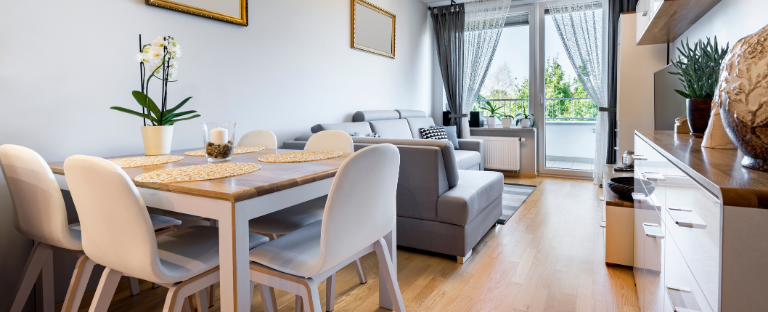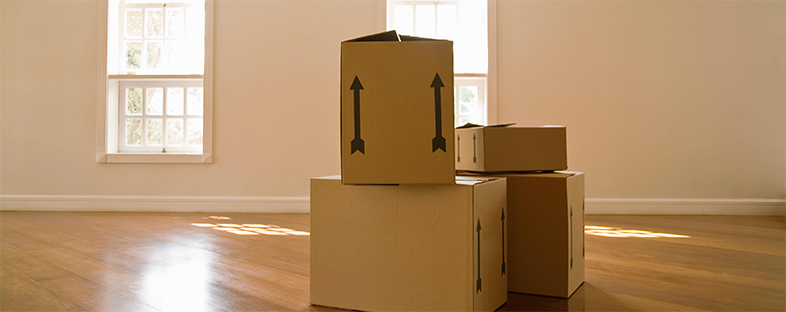Posts by Ready, Set, Move Group
Organizing Your Paperwork and Staying Organized

In this digital world, you might wonder why there is still so much paper piled up in your home. Here are some tips to help you manage the load.
1. ARRANGE PILES
Start by sorting your paperwork into categories (household, medical, automobile). Shred unneeded or outdated documents that contain personal information such as your social security number or credit card information. Less sensitive documents can just be recycled.
2. CREATE LABELS
If you’ve got a hanging file system, create labels for each file. Use manila folders inside a file if you have subcategories such as “electric”, “cable”, “phone” inside the Utilities file. Personally, I prefer to have all my label tabs on one side or the other. My hanging files are labeled on the left. My manila folders all have right hand tabs.
3. ESTABLISH DROP ZONES
Set up landing places for major categories of incoming paper items such as mail, bills to be paid, credit card receipts and banking items. Use baskets or small trays. Dispose of junk mail as soon as you bring it into the house. I prefer separating my bills (yes, I still favor paper bills) from the rest of my mail immediately. These go into a bin near my computer, where I pay all my bills. I like to drop my receipts into another bin. Once my credit card bill arrives, I check my receipts against the bill and then toss the old receipts. This is a must-do every month for me. I place all papers/mail into appropriate bins each and every day.
4. KEEP IT RELEVANT AND TIMELY
Every three to six months, do a review of your files and dispose of any papers that are no longer relevant. This will keep your files slim. For instance, if you had a dispute with your doctor’s office and took notes and kept papers pertinent to the dispute, make sure to dispose of those papers once the dispute has been resolved. Tax returns and documents pertaining to household repairs should be kept for at least three years.
GOING PAPERLESS?
If you’re considering going paperless, your digital documents only require hard drive space, freeing up physical space in your home. You can use your search tool to find specific files but I still recommend labeling and filing every document appropriately and storing them in an organized manner on your computer, just as you would if they were physical files. Back up files onto an external hard drive or a cloud storage service.
Senior Downsizing

Reducing your Space but not your Lifestyle
Every day, 10,000 people in the US turn 65. And, 40% of homeowners aged 50 to 64 plan to move in the next 5 years. Many are planning to move to a smaller space for a variety of reasons. Many have become empty nester’s and no longer need a large home and others are selling their home for financial benefit. Some are looking for ways to reduce the cost and involvement of up keeping a home. Some just want to simplify their lives. Moving to a smaller home or independent living and assisted living residences will do just that.
Like with any move, senior homeowners need to consider the basic elements of preparing a home for sale and moving such as sorting through a lifetime of possessions, decluttering and packing and unpacking for the move. A move to a downsized home requires some additional thought and preparation and here are just a few of the many things to consider:
COMFORT AND ACCESSIBILITY
While you may not consider how a wheelchair functions in your home when you’re in your 50’s or 60’s and healthy, thinking ahead can truly pay off. The National Association of Home Builders recommends these type of features to make your home more accessible:
- Single-story living, including a bedroom and full bath on the main floor, with no steps up or down between main areas
- Low-maintenance exterior materials, like brick or high-quality siding
- 5’ square circulation and turning space in kitchen, living room, and at least one bedroom and bathroom
- 3’ wide hallways and doors
- A covered entry with minimal steps into the home
- Covered parking with sufficient clearance for a wheelchair
- Minimal thresholds at doorways—flush is best
SORTING
Once you’ve picked out your new home, you’ll need to start planning for the upcoming move. Homeowners preparing to downsize may have accumulated a lifetime of possessions and memories. It’s time to sort through everything and make some decisions.
- Make your kids take their stuff! If your kids have grown and a have a place of their own, it’s time for them to take their possessions or let them go.
- Study the floor plan carefully. Before moving to a smaller home, be sure to obtain a copy of the home’s floor plan. This will help you determine what goes where and what not to bring when you move.
- Keep your favorite and sentimental items. If there isn’t room to take these items with you, consider taking a photo of the item. There are services that can scan an entire bulky photo album, giving you the ability to keep the memories on your computer.
- Gift other great items to your family and friends. It is easier to part with an item, if you know it is going to a good home and to someone you care about.
- Host a garage sale! Items like furniture in good repair, yard equipment, lawn tools, and baby gear are all hot items sure to go quickly.
- Work with a professional auction house or estate sale company for high value items. They will either buy items outright or auction items for you. They’ll do all the work for you, but be aware in advance of the percentage of proceeds that these types of companies will claim.
- Make donations to charitable organizations. It feels good to do good for others, and don’t forget to claim the tax write-off.
- Dispose or recycle anything that isn’t worth bringing with you or selling.
STORAGE
With a little creativity, and storage solutions you may never have thought of, you can maximize your space, even with less square footage.
- Under the bed – This doesn’t mean hiding items under the bed when company comes. Purchase plastic bins made especially for under bed storage. Some even have wheels making them easier to access. If you’re buying a new bed anyway, consider one with built in storage drawers underneath.
- Ottomans – When decorating your living room or entry way, consider an ottoman or a bench that also doubles as a storage bin.
- Bins and baskets – Store belongings inside bins and baskets. It’s an affordable and attractive way to save space when downsizing. They can be placed almost anywhere and help make the home both stylish and organized.
- Drawer organizers – Contain the chaos in your various drawers by adding drawer organizers. These will save you space by allowing you to more efficiently store everything from makeup and toiletries to office supplies and kitchen utensils inside your drawers.
- Wall racks behind doors – Installing hanging wall racks behind doors will help prevent clutter in your closets, pantries and drawers and make it much easier to find everything from your spices to your favorite shoes when you need them.
- Custom closets – If you’re lucky enough to be able to customize your closets, you’ll find that a good closet designer can maximize your storage in ways you’ve never imagined.
GET HELP AND ADVICE FROM AN EXPERT! This is what we do every day at Ready, Set Move Group. Contact us today to learn how we can help you.
Inheriting A House

Clearing out a home after inheriting
If you’re faced with clearing out the home of a loved one you’re probably on an emotional roller coaster. I can be a bittersweet process. You’ll expectedly come across items that make you laugh as well as cry. Whether you’re the executor of the will or not, you’ve been given an important task. The process is similar to preparing your home for sale (your own home) but with a few variations. A home is likely to be the largest asset of the decedent’s estate. If you’ve been entrusted with this responsibility, here are some things to keep in mind:
Change the locks – You just don’t know how many people might have the key to this house. Cleaners, friends, dog walkers, all could be key holders. By changing the locks (and the garage code if applicable) you’ll rest assured that no one will enter the home without your permission.
Forward the mail – if you are not residing at the home while preparing it for market, have the mail forwarded to your home or office. Have newspapers cancelled. You don’t want letters, bills and newspapers piling up in or around the mail box. Nothing says “empty home” like the accumulation of mail; a clear invitation to vandals and burglars. Go to USPS.gov to fill out a change of address form. Don’t forget about email as well. Assuming you can get into the decedent’s email account, you can request emails be sent to you. This may help you determine who creditors are, whether payments are current as well as seeing if any subscriptions need to be cancelled.
Keep paying the bills – While you’ll want to stop some services, there are others that need to continue until the home is sold. Homeowner’s insurance, mortgage and utilities are just some examples of services that need to stay current. You may also want to continue such services as the landscaper, pool service, and exterminator.
Legal and financial papers – Start with the most obvious places to look for these kinds of papers such as the file cabinet and desk drawers. But don’t limit your search to the obvious. Check for papers under the mattress, taped to the underside of a drawer or inside a book. Of course, check the computer as well for electronic files.
Ask your realtor – if you’ve chosen a realtor to list the home, now is the time to ask them for their input with regard to staging the home for sale. This just means that they have a vision of how the home should look in order to attract the most potential buyers. If the home has tasteful furnishings, the realtor might ask that you leave the home “as is”. A furnished home usually sells more quickly and an empty one. If the existing furnishings are outdated and don’t enhance the property, they may ask that you completely empty the home. You might want to have a conversation then about staging the home with a professional stager who will bring in lovely furnishings and accessories for a fee. There is an option that lies somewhere between a completely empty home and a fully staged home; staging with a mix of existing furnishings and new furnishings or accessories. You can try this yourself but you may want to call in a professional such as the Ready, Set Move Group to guide you through the process. Remember, it’s best to find out early on if the realtor thinks items such as the dining room set or bedroom set need to stay in order to help sell the home before you ship it off to a family member.
Sort personal belongings – This will probably be your most emotionally charged task. While it may seem overwhelming, try to chip away at it each day. Create useful sorting categories and physically place the items in groupings or use color coded stickers. Main categories such as: keep, sell, donate, and discard are a great way to start. You may want to divide the “keep” category into items for different family members.
Home furnishings – As with personal belongings, create categories for large pieces of furniture. You and the realtor may decide the furnishings should stay while the home is on the market but have a plan for the items once the home sells. Create categories such as: ship to family members, sell, donate and dispose.
Consider hiring someone to manage the process of preparing the home for sale, especially if you don’t live nearby. Someone who can compassionately sort through a lifetime of belongings, knows the ins and outs of staging a home, shipping resources, local charity resources and guidelines (you’d be surprised at how difficult it can be to donate certain types of items!) as well as reputable auction houses and affordable disposal companies. They can also continue to maintain the home, manage local professional services such as roof cleaners and painters and will keep you in the loop every step of the way, feeing you to get back to your normal activities. The Ready, Set Move Group has experience with both local and international clients who have inherited homes and needed to prepare them for sale. Call us for more information.
Whether you are tackling this process alone, with family members or have delegated it to a pro, taking the proper steps in preparing the home for market can result in a less stressful, more peaceful process and will likely increase the value of the home.
Contact us today for a free phone consultation.
Executor of Estate Duties

Top 10 Duties of an Executor with Step by Step instructions
When a loved one passes away and their will is accepted for probate, the executor “steps into their shoes,” meaning he or she can perform all the legal tasks the decedent used to do. This includes selling property, paying creditors, bringing lawsuits, reviewing medical records and distributing assets to others. In addition, an Executor may be responsible for preparing a home for sale. Clearly, acting as an executor is an important job, assigned to an individual the decedent considered a responsible person.
Executors can be attorneys, accountants or bank or trust companies. More often, however, they are trusted family members or friends. For family and friends, they have the difficult task of balancing the mourning of the loss of a loved one to the fiduciary duty of the Executor.
Depending on the complexity of circumstances, an executor will be required to carry out any or all of the following duties:
- File a copy of the will with the local probate court. Even if probate isn’t necessary, the will still must be filed with the probate court.
- Notify agencies and companies. Agencies such as The Social Security Administration, credit card companies, and decedent’s bank need to be notified.
- Decide what kind of probate is needed. Sometimes probate isn’t needed or the value of the estate may allow it to pass through an expedited process. You’ll need to file a petition with the court if probate is required and will most likely need an attorney’s help to do this.
- Represent the estate in court. An executor may be needed to appear in court on behalf of the estate.
- Set up an estate bank account. Use this to pay any outstanding bills the decedent may have such as utilities, and mortgage payments. This account will also be used to hold any incoming paychecks or money owed to the decedent.
- File an inventory of the estate’s assets with the court.
- Care for the property until it can be sold or distributed. This includes maintaining a house until it is distributed or sold. An executor is responsible for finding all personal property in the estate, including such items as a safety deposit box.
- Pay debts and taxes of the estate. This includes notifying creditors and filing income tax returns for that year.
- Distribute assets. Supervise the distribution of the deceased person’s property/assets according to the will or to those entitled by law. Now is a good time to consult with a reputable auction house like the one I work with frequently, Neely Auction, for advice on how best to handle certain assets.
- Dispose of other property. If any property is left after paying the estate’s debts and dispersing assets to heirs, the executor is responsible for disposing of it.
While being chosen as an executor is a special honor, it can also be stressful and time consuming. At Ready, Set, Move Group we have experience in handling the contents of an inherited homes throughout Broward and Palm Beach Counties. Trust us to compassionately sort through a lifetime of possessions while keeping you in the loop every step of the way. Whether you live nearby or across the ocean, we can handle distributing the contents of the home as well as preparing it for market.
Contact us today for a free phone consultation.
Downsizing

Downsizing to live a less stressful life
While downsizing your life can be exciting, it can also be stressful. The goal is to create a simpler life for yourself, but if you’re preparing your home for sale or moving out of a large family apartment you’ve lived in for what seems like a lifetime already, it can be overwhelming. Downsizing is more than just a step in preparing your home for market, it’s the careful planning needed to make a smooth transition into your new home.
It may seem challenging now, but in the long run, downsizing and decluttering will actually help you live a less stressful life. You’ll have fewer possessions to maintain, clean, repair and, potentially, stumble over.
Here are some ideas to help you get started:
- START EARLY! It’s never too early to begin the downsizing process. Begin by focusing on typical problem areas such as the attic, basement, garage, closets, and file cabinets. Choose one area and just dig in.
- SHOW YOUR GENEROSITY. Since you can’t take everything you own to your new home, now is the perfect time to “gift” some of your treasures to special people in your life like family, helpful neighbors, friends, favorite organizations, your church/synagogue or a charity of your choice.
- SELL ITEMS OF VALUE. Remember, “Some people’s trash is another’s treasure”. A yard sale could be a convenient way to dispose of some unwanted items and to make a few dollars. Just evaluate the goods you plan to sell to determine if the potential is worth the effort of organizing the yard sale. And, if you have art or furniture that you believe has some value, contact a local art auction and consignment house. They will typically visit your home to assess the items of interest and either provide an offer to buy or determine items qualified to go to auction. Remember though, what was originally paid for an item doesn’t necessarily mean that is what will be offered. It is based on the individual item and current trends and consumer demand. Also ask about the sales commission rate for items consigned for auction.
- KEEP YOUR MEMORIES. You probably have boxes of family and vacation photos. Consider new ways to preserve family memories and stories like copying your special photos on to CDs, or try your hand at scrap-booking. There are also professional services that will take all your photos, slides, and videos and do it for you.
- NEW LOOKS FOR BOOKS. If you own a lot of books, you need to spend time downsizing your collections. Books take up lots of space and are heavy (and costly) to move. Consider donations to libraries or senior centers, or sales to used bookstores. Call on a book dealer for older books with potential value.
- USE IT UP AND DON’T MOVE IT OUT. Check your cabinets, fridge and pantry and take an inventory of your canned goods, frozen foods, and paper products. Plan to use as many of these products as you can before moving. When you consider the potential cost of packing and moving you may be better off reducing your box count and going to the grocery store after your move. If you simply have too many of these items, think about the less fortunate and pass them on to a local food pantry.
- RECYCLE SAFELY. Locate and put together all of your household, yard, and automotive cleaning products, as well as paints that can be considered hazardous. Other items considered hazardous include auto batteries, fluorescent lamps, fire extinguishers, fireworks, pool chemicals and propane tanks. You’ll have to move them before selling your home. Check with you local waste disposal or public works departments for the specifics of disposal in your area.
- KEEP IN TOUCH. Create a list of people, places, and utilities/services that need to be notified of your upcoming change in address.
- PLAN AHEAD. Make a floor plan of your new home and use your computer or cut out furniture templates to determine the pieces of furniture that will fit in your new home, and the best location of each. Knowing which pieces will fit in your new space will keep you from moving too much furniture and really streamline the process on packing and moving day.
- PACK A SURVIVAL BAG. Just like your carry-on bag on a flight or a cruise vacation, put together a survival bag for move day. Items to consider include personal needs (medications, eyeglasses, toiletries including a roll of toilet tissue, change of clothes, important papers, etc); kitchen needs (snacks, drinks, folding chair, disposable cups/plates); basic tools (hammer, screwdriver, flashlight, tape, etc.); cleaning supplies (sponge, roll of paper towels, soap, etc.); and payment for mover – be sure you know which form of payment they prefer.
- DON’T BE AFRAID TO ASK FOR HELP! Don’t be too proud or independent-minded to ask for help. Moving is not easy and you do not have to do it all yourself. Some of these downsizing steps take time to accomplish. Remember your goal is to move into your new home happy, healthy, and ready to enjoy you new lifestyle! This is what we do every day at Ready, Set Move Group. If you are looking to learn more about how we can help, Contact us today.
Best Way to Pack for Moving

Packing Moving Boxes – How Hard Can That Be?
One of the projects when preparing your home for sale will likely be packing moving boxes. Even if you are only packing items away while decluttering, you’ll want to do it right the first time. It seems like a lot of work even though it’s simply putting items in a box and taping it up, right? Wrong.
There is an art and process to packing for a move properly and ensuring that everything arrives in the same condition as when it was packed. A scientific approach to packing can make your pack and unpack experience as easy and efficient. Here are a few tips, some advice and smart moving hacks to consider:
Declutter unnecessary items for a lighter move.
I know, I covered decluttering tips in previous blogs but it is worth repeating. One of the most crucial packing tips for moving is making sure you don’t move anything that you no longer need. Do a thorough walkthrough of your home and declutter as you organize.
Get organized and pack things up by room in advance.
Once your home has been successfully decluttered, create boxes labeled with individual rooms. Consider creating an inventory of the belongings going into each box. An inventory will help you quickly locate items as you need them. And (for instance), if the items from your current den are going to be placed in your new guest room, label your box with the intended room, not the current room. This will make your unpacking much easier. You will find that you’ll be able to pack decorative items well in advance of your move since you don’t actually utilize those items. Toiletries, on the other hand, might be some of the last things you pack.
Start the packing process well in advance of your scheduled moving day. The more time you spend packing and organizing ahead of time, the less work you’ll leave for yourself at the last minute. And, you will greatly reduce your stress and potential mistakes.
Packing Your Moving Boxes.
Pack heavy belongings in smaller boxes. It is much easier to pick up a small 50-pound box than a large one. Large boxes tend to be awkward to carry and difficult to pack into a moving truck.
Our next piece of advice when it comes to packing moving boxes is this: never risk it. If you have a valuable item that you are worried about damaging, don’t give it a second thought—protect it. Put bubble wrap, blankets or packing paper around it to protect it from the hustle and bustle. And, quick side note: pack your dishes vertically, it reduces the risk of them breaking. Consider having a professional pack your belongings, or at least your breakables.
Invest in quality moving boxes.
A mistake many people make when moving is trying to cram all of their belongings into a few cardboard boxes they have around the house. Use as many boxes as you need to create easy-to-lift loads.
Remember to keep an eye on your box weight. It is a good rule of thumb to keep your largest boxes to no more than 50 pounds.
Don’t use boxes from grocery or liquor stores if you plan on storing items. These boxes can be infested with unwanted pests. It’s best to use quality moving boxes to ensure they are sturdy and won’t fall apart mid-move including: Wardrobe boxes for clothing, Dish Pack boxes for dishes, glasses and china, Mirror Pack boxes for mirrors and wall art and small, medium and large moving boxes for other items.Hint: if you’re moving locally, ask your moving company if they’ll lend you moving boxes for the day of the move.
Label everything and take photos of electronics.
As you pack, be sure to stay as organized as possible. Here are some simple packing tips to keep in mind as you get everything together:
- Package screws and bolts from furniture into ziplock bags and label them.
- Code moving boxes by room and pack and unload one code at a time.
- Label moving boxes on the top and side for an easier view as opposed to on the top flap only.
- Take a photo of how cables and wires are connected to your electronics to reduce time and confusion when setting them up in your new home.
And to make the packing process as easy as possible ask for help from an expert! It’s likely to save you time, stress, and money in the long term. Contact us today for a consultation.